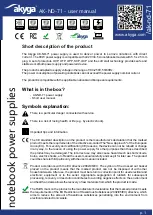
16
1239-221
ASSEMBLY AND OPERATING
(continued)
DRILLING
When drilling into smooth, hard surfaces such as metal, use a center punch to mark the
started. The workpiece to be drilled should be secured in a vice or with clamps to keep it
from turning as the drill bit rotates (Fig. 12).
1.
Check the drill bit to make sure it is firmly locked into the drill chuck, and verify that
the forward/reverse switch is in the forward position.
2. Set the torque clutch to the drilling position.
3.
the handle and switch.
NOTE:
Make sure the hand placed on the body of the drill does not cover the air
vents. Covering these air vents will reduce motor cooling, and possibly lead to
overheating the motor.
4.
point to be drilled. Squeeze the switch trigger to start the drill.
NOTE:
Always use a higher drill speed when drilling small holes. Use a slower drill
speed when drilling large holes.
5. Move the drill bit into the workpiece applying only enough pressure to keep the bit
cutting. Do not force the drill bit or apply sideways pressure to elongate the hole.
WARNING:
Be prepared for binding and bit breakthrough. When these situations occur,
the drill bit has a tendency to grab the workpiece. This action will kick the drill opposite
to the direction of the drill bit rotation, and could cause loss of control when breaking
through material as you complete drilling the hole. If you are not prepared, this loss of
control can result in serious injury.
When drilling metals, use light oil on the
drill bit to keep it from overheating. The
oil will prolong the life of the drill bit and
improve the cutting action. If the bit jams
in the workpiece, or if the drill stalls,
release the trigger switch immediately.
Remove the bit from the workpiece and
determine the reason for jamming.








































